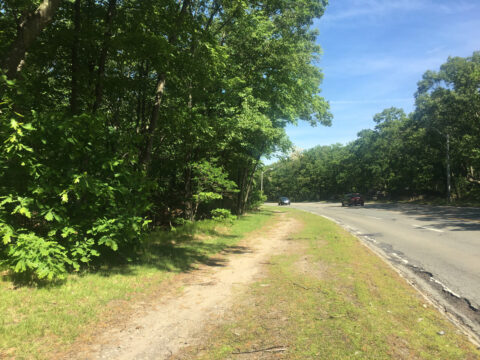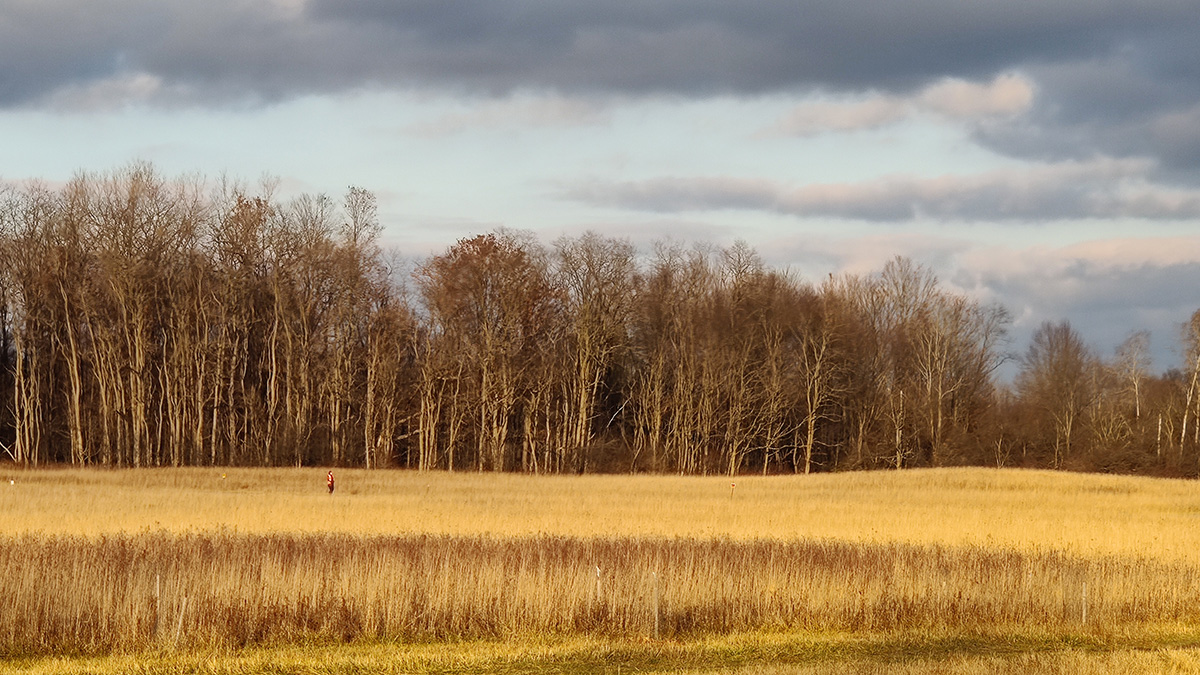Trees at the edges of forests often seem like an afterthought, but those trees may play an outsized role in carbon storage, new research from the northeastern United States has found.
“Forest edges are traditionally viewed as degraded remnants that are lesser than the interior pristine forests,” said ecologist and Ph.D. candidate Luca Morreale of Boston University. But in reality, these forest edges, along roads, housing developments, and farming fields, have 24% more biomass than areas of forest farther from an edge.
Morreale looked at the speed of tree growth and other factors in more than 48,000 forest plots in the northeastern United States tracked by the U.S. Department of Agriculture. Trees within 30 meters of an edge grew nearly twice as fast, and more sunlight fueled a higher tree density. Morreale published the work in Nature Communications late last year.
Edges take up 25% of forest area in the northeastern United States.
Faster-growing trees packed tightly together mean that more carbon is stored in tree roots, trunks, and leaves. Forests remove 30% of anthropogenic carbon dioxide emissions each year, and many countries are relying on forests to draw down carbon in years to come.
Morreale believes that because a forest’s edges behave differently than the interior, carbon models need to include those effects. “Right now, they’re not included,” he said, even though edges take up 25% of forest area in the northeastern United States.
But creating more edges won’t help climate change, warned study coauthor and Boston University biogeochemist Lucy R. Hutyra. “Fragmentation is a terrible carbon management strategy,” she said. Cutting down trees to segment forests releases much more carbon than edges absorb.
Urban Soils Help Too
In another study by Hutyra’s team, soil in urban forests could store more carbon than initially thought.
“It’s potentially really good for us.”
Soils at the edges of urban forests hold on to carbon for longer than rural areas, meaning that edge soils have a larger storage capacity. “It’s potentially really good for us,” said lead author and Boston University biogeochemistry Ph.D. student Sarah Garvey.
Hot and dry urban soil, surrounded by pavement and human meddling, exhales less carbon dioxide than rural soil that has a more active microbial mix of bacteria, fungi, and roots. A flourishing microbial scene breaks down more organic matter from the soil and releases more carbon dioxide back into the atmosphere. Because urban soil is so taxed, it releases less carbon.
But this applies only to urban soil most people don’t look at: not the manicured flower beds or mulch on lawns, but the rank-and-file forest dirt next to a road. Garvey visited eight Massachusetts sites every 2 weeks for a year—bypassing weeks when ice covered the soil—and published the findings in Global Change Biology in February.

“In most of the landscape, these areas aren’t actually managed. They’re just kind of there,” said Hutyra of forest edges.
Christopher Williams of Clark University, who studies carbon in North American forests and was not involved in the research, said that Morreale’s study noted that although edges of forests are productive, they’re also more vulnerable.
“Edges have more mortality from harvesting or conversion to nonforest, and both of these effects can significantly reduce long-term carbon storage for forests living on the edge,” said Williams.
As communities rally to conserve forests, research like this helps planners understand the carbon benefits of different forests. “Is a place like Franklin Park [in Boston], where there’s tons of foot traffic, just as valuable to save as a remote forest in Maine where three people visit?” said Hutyra. “There’s no easy answer.”
—Jenessa Duncombe (@jrdscience), Staff Writer

